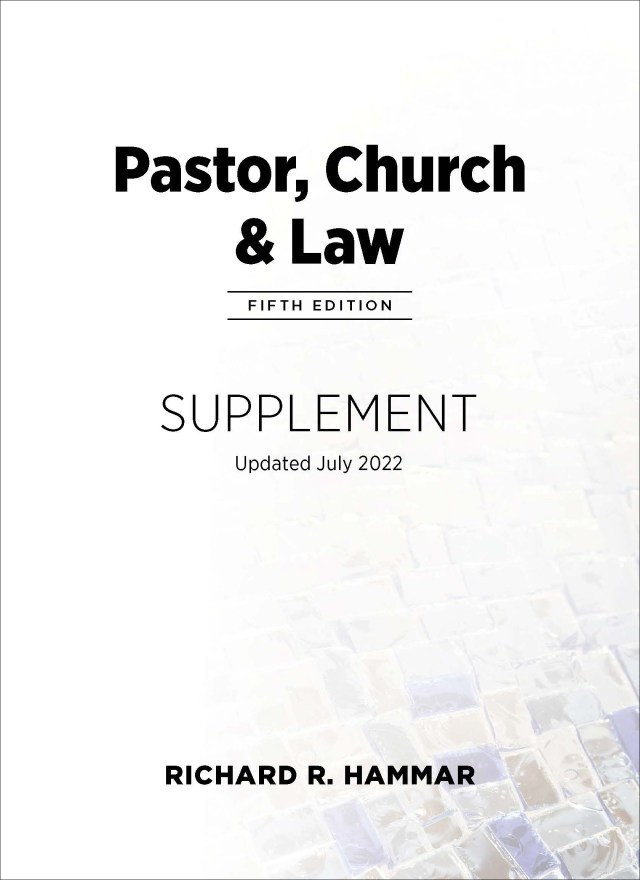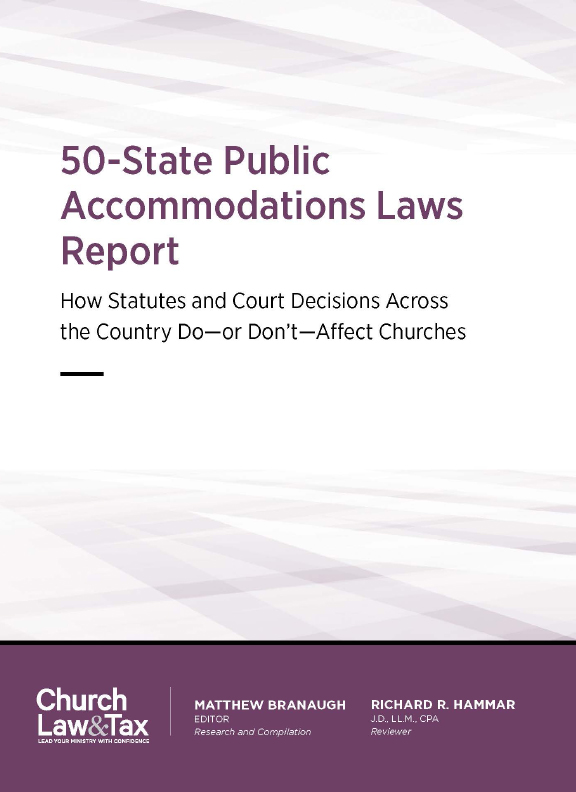• In a case of great significance to religious denominations and church agencies, the Alabama Supreme Court ruled that a Catholic order was not legally responsible for the actions of a priest who had entered an abortion clinic and injured a woman while destroying several pieces of equipment with a sledge hammer. The priest, a member of the Benedictine Society, had been appointed pastor of a local parish and “pro-life coordinator” for the Birmingham diocese by the bishop. The injured woman sued the Benedictine Society and the priest’s immediate superior (an abbot), claiming that the priest was an “agent” of the society and accordingly that the society was legally responsible for his conduct. In particular, she argued that the priest “was a member of the society and, as such, was subject to [his abbot’s] orders as it related to his 24-hour life as a monk, including the authority to recall him to the abbey. The evidence established that [the abbot] knew of at least one previous act of violence on the [priest’s] part, but failed or refused to exercise any discipline over him because of it. Finally, it established that [the priest] was driving a society-owned car when he went to [the abortion clinic] and attacked the [plaintiff].” The trial court disagreed that these allegations proved an agency relationship that gave rise to legal liability on the part of the society or abbot, and the case was appealed to the state supreme court.
The supreme court agreed with the trial court that the plaintiff had produced no evidence demonstrating an agency relationship between the society and the priest: “The Benedictine Order is a clerical order. [The priest] is a monk in that society and [the abbot] is his superior. However, the relationship between [the priest] and the society was ecclesiastical and did not necessarily create a … principal/agent relationship. Furthermore, the fact that [the priest] is a monk 24 hours a day does not necessarily mean that his membership in the society makes the society liable for all of his actions.” The court further observed that “the law with regard to ecclesiastical orders and religious societies to be that the relationship is essentially ecclesiastical in nature. I would analogize this to situations where a young man may be in a seminary and the seminary is asked to supply a preacher or a minister for a congregation. The fact that the young minister may have some alma mater does not make the seminary responsible for his behavior in the event he elects to commit a burglary or some other act which he might consider to be ordained by divine aegis or providence. It would not in and of itself make the seminary responsible for his behavior.” Similarly, “the plaintiff must have evidence in addition to the fact that [the priest] was a member of the Benedictine Society of monks.” The court further noted that there was no evidence “that the Benedictine Society was acting in a principal-agency capacity with the [priest]. Further, the court finds there was no employment as that term implies or no employment in the sense required for negligent employment.” Finally, the court rejected the plaintiff’s contention that the fact that the priest had driven a society-owned car to the abortion clinic demonstrated that the priest was acting as an agent of the society and accordingly that the society was legally responsible for his actions. It noted that the priest “had access to the car for both business and personal use; therefore, the mere fact that he was driving the car does not, standing alone, constitute evidence that the society was responsible for [his] actions.” This case is significant for the following reasons: (1) It recognizes that the mere existence of ecclesiastical authority by a denominational agency over a minister does not, without more, make the minister an “agent” of the denomination. This is an important conclusion, since the actions of agents within the scope of their employment generally are attributable to their principals or employers. Many denominations and church agencies have been sued for injuries allegedly caused by clergy serving local churches, by plaintiffs’ attorneys seeking “deep pockets” out of which to satisfy a judgment. Cases such as this one will, hopefully, reduce the likelihood of such frivolous lawsuits that unfortunately result in enormous expenditures of time and money. Second, the court used an interesting analogy to support its conclusion—that of a seminary’s relationship with its graduates. The seminary confers a degree upon each graduate, but that action, standing alone, does not make the seminary liable for the subsequent actions of its graduates. Similarly, many denominations confer ecclesiastical credentials upon clergy, but this procedure, without more, should never authorize persons injured by the actions of a minister to sue the denomination. Third, the state supreme court affirmed a “directed verdict” by the trial court. A directed verdict is a decision by the trial judge, before the case is submitted to the jury, that the plaintiff’s case is not supported by any evidence and accordingly that the case need not be submitted to a jury. This is an extraordinary action for a trial court to take, and it is reserved for only the most meritless claims. The fact that such a verdict was involved in this case, and was upheld by the state supreme court, reinforces the position taken by the court. Wood v. Benedictine Society of Alabama, Inc., 530 So.2d 801 (Ala. 1988).
© Copyright 1989, 1998 by Church Law & Tax Report. All rights reserved. This publication is designed to provide accurate and authoritative information in regard to the subject matter covered. It is provided with the understanding that the publisher is not engaged in rendering legal, accounting, or other professional service. If legal advice or other expert assistance is required, the services of a competent professional person should be sought. Church Law & Tax Report, PO Box 1098, Matthews, NC 28106. Reference Code: m58 m01 c0189




